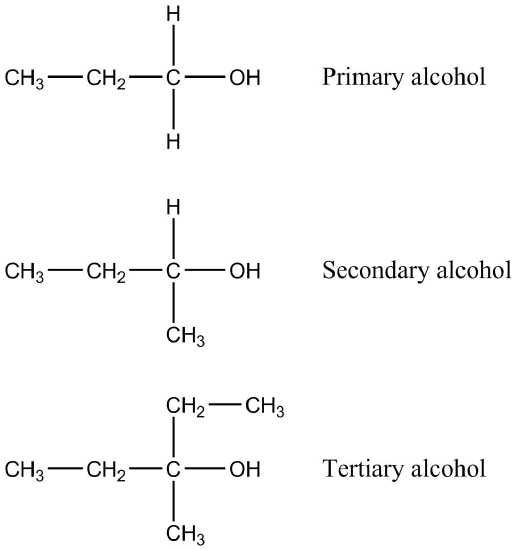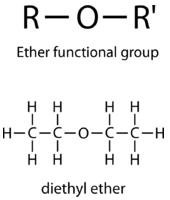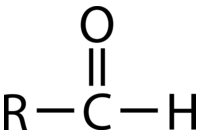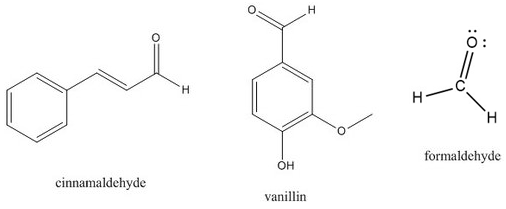4.7: Functional Groups or Families of Compounds
- Page ID
- 431276
\( \newcommand{\vecs}[1]{\overset { \scriptstyle \rightharpoonup} {\mathbf{#1}} } \)
\( \newcommand{\vecd}[1]{\overset{-\!-\!\rightharpoonup}{\vphantom{a}\smash {#1}}} \)
\( \newcommand{\id}{\mathrm{id}}\) \( \newcommand{\Span}{\mathrm{span}}\)
( \newcommand{\kernel}{\mathrm{null}\,}\) \( \newcommand{\range}{\mathrm{range}\,}\)
\( \newcommand{\RealPart}{\mathrm{Re}}\) \( \newcommand{\ImaginaryPart}{\mathrm{Im}}\)
\( \newcommand{\Argument}{\mathrm{Arg}}\) \( \newcommand{\norm}[1]{\| #1 \|}\)
\( \newcommand{\inner}[2]{\langle #1, #2 \rangle}\)
\( \newcommand{\Span}{\mathrm{span}}\)
\( \newcommand{\id}{\mathrm{id}}\)
\( \newcommand{\Span}{\mathrm{span}}\)
\( \newcommand{\kernel}{\mathrm{null}\,}\)
\( \newcommand{\range}{\mathrm{range}\,}\)
\( \newcommand{\RealPart}{\mathrm{Re}}\)
\( \newcommand{\ImaginaryPart}{\mathrm{Im}}\)
\( \newcommand{\Argument}{\mathrm{Arg}}\)
\( \newcommand{\norm}[1]{\| #1 \|}\)
\( \newcommand{\inner}[2]{\langle #1, #2 \rangle}\)
\( \newcommand{\Span}{\mathrm{span}}\) \( \newcommand{\AA}{\unicode[.8,0]{x212B}}\)
\( \newcommand{\vectorA}[1]{\vec{#1}} % arrow\)
\( \newcommand{\vectorAt}[1]{\vec{\text{#1}}} % arrow\)
\( \newcommand{\vectorB}[1]{\overset { \scriptstyle \rightharpoonup} {\mathbf{#1}} } \)
\( \newcommand{\vectorC}[1]{\textbf{#1}} \)
\( \newcommand{\vectorD}[1]{\overrightarrow{#1}} \)
\( \newcommand{\vectorDt}[1]{\overrightarrow{\text{#1}}} \)
\( \newcommand{\vectE}[1]{\overset{-\!-\!\rightharpoonup}{\vphantom{a}\smash{\mathbf {#1}}}} \)
\( \newcommand{\vecs}[1]{\overset { \scriptstyle \rightharpoonup} {\mathbf{#1}} } \)
\( \newcommand{\vecd}[1]{\overset{-\!-\!\rightharpoonup}{\vphantom{a}\smash {#1}}} \)
\(\newcommand{\avec}{\mathbf a}\) \(\newcommand{\bvec}{\mathbf b}\) \(\newcommand{\cvec}{\mathbf c}\) \(\newcommand{\dvec}{\mathbf d}\) \(\newcommand{\dtil}{\widetilde{\mathbf d}}\) \(\newcommand{\evec}{\mathbf e}\) \(\newcommand{\fvec}{\mathbf f}\) \(\newcommand{\nvec}{\mathbf n}\) \(\newcommand{\pvec}{\mathbf p}\) \(\newcommand{\qvec}{\mathbf q}\) \(\newcommand{\svec}{\mathbf s}\) \(\newcommand{\tvec}{\mathbf t}\) \(\newcommand{\uvec}{\mathbf u}\) \(\newcommand{\vvec}{\mathbf v}\) \(\newcommand{\wvec}{\mathbf w}\) \(\newcommand{\xvec}{\mathbf x}\) \(\newcommand{\yvec}{\mathbf y}\) \(\newcommand{\zvec}{\mathbf z}\) \(\newcommand{\rvec}{\mathbf r}\) \(\newcommand{\mvec}{\mathbf m}\) \(\newcommand{\zerovec}{\mathbf 0}\) \(\newcommand{\onevec}{\mathbf 1}\) \(\newcommand{\real}{\mathbb R}\) \(\newcommand{\twovec}[2]{\left[\begin{array}{r}#1 \\ #2 \end{array}\right]}\) \(\newcommand{\ctwovec}[2]{\left[\begin{array}{c}#1 \\ #2 \end{array}\right]}\) \(\newcommand{\threevec}[3]{\left[\begin{array}{r}#1 \\ #2 \\ #3 \end{array}\right]}\) \(\newcommand{\cthreevec}[3]{\left[\begin{array}{c}#1 \\ #2 \\ #3 \end{array}\right]}\) \(\newcommand{\fourvec}[4]{\left[\begin{array}{r}#1 \\ #2 \\ #3 \\ #4 \end{array}\right]}\) \(\newcommand{\cfourvec}[4]{\left[\begin{array}{c}#1 \\ #2 \\ #3 \\ #4 \end{array}\right]}\) \(\newcommand{\fivevec}[5]{\left[\begin{array}{r}#1 \\ #2 \\ #3 \\ #4 \\ #5 \\ \end{array}\right]}\) \(\newcommand{\cfivevec}[5]{\left[\begin{array}{c}#1 \\ #2 \\ #3 \\ #4 \\ #5 \\ \end{array}\right]}\) \(\newcommand{\mattwo}[4]{\left[\begin{array}{rr}#1 \amp #2 \\ #3 \amp #4 \\ \end{array}\right]}\) \(\newcommand{\laspan}[1]{\text{Span}\{#1\}}\) \(\newcommand{\bcal}{\cal B}\) \(\newcommand{\ccal}{\cal C}\) \(\newcommand{\scal}{\cal S}\) \(\newcommand{\wcal}{\cal W}\) \(\newcommand{\ecal}{\cal E}\) \(\newcommand{\coords}[2]{\left\{#1\right\}_{#2}}\) \(\newcommand{\gray}[1]{\color{gray}{#1}}\) \(\newcommand{\lgray}[1]{\color{lightgray}{#1}}\) \(\newcommand{\rank}{\operatorname{rank}}\) \(\newcommand{\row}{\text{Row}}\) \(\newcommand{\col}{\text{Col}}\) \(\renewcommand{\row}{\text{Row}}\) \(\newcommand{\nul}{\text{Nul}}\) \(\newcommand{\var}{\text{Var}}\) \(\newcommand{\corr}{\text{corr}}\) \(\newcommand{\len}[1]{\left|#1\right|}\) \(\newcommand{\bbar}{\overline{\bvec}}\) \(\newcommand{\bhat}{\widehat{\bvec}}\) \(\newcommand{\bperp}{\bvec^\perp}\) \(\newcommand{\xhat}{\widehat{\xvec}}\) \(\newcommand{\vhat}{\widehat{\vvec}}\) \(\newcommand{\uhat}{\widehat{\uvec}}\) \(\newcommand{\what}{\widehat{\wvec}}\) \(\newcommand{\Sighat}{\widehat{\Sigma}}\) \(\newcommand{\lt}{<}\) \(\newcommand{\gt}{>}\) \(\newcommand{\amp}{&}\) \(\definecolor{fillinmathshade}{gray}{0.9}\)- Identify and name families of organic compounds or functional groups in compounds.
With over twenty million known organic compounds in existence, it would be very challenging to memorize chemical reactions for each one. Fortunately, molecules that belong to the same family of compounds or molecules with similar functional groups tend to undergo similar reactions. A functional group is defined as an atom or group of atoms within a molecule that has similar chemical properties whenever it appears in various compounds. Even if other parts of the molecule are quite different, certain functional groups tend to react in certain ways.
Hydrocarbons
A hydrocarbon is an organic compound that is made up of only carbon and hydrogen. A hydrocarbon is the simplest kind of organic molecule and is the basis for all other more complex organic compounds. Hydrocarbons can have single, double, or triple bonds between the carbon atoms. Alkanes, alkenes, alkynes and aromatic compounds are hydrocarbons. Hydrocarbons interact with each other through London forces.
Alkanes
An alkane is a hydrocarbon in which there are only single covalent bonds. The simplest alkane is methane, with the molecular formula CH4. The carbon is the central atom and makes four single covalent bonds to hydrogen atoms.

Alkanes are generally unreactive. We primarily use alkanes as a source of energy when they are combusted. Alkanes interact with each other through London forces
Organic molecules vary greatly in size and when focusing on functional groups, we want to direct our attention to the atoms involved in the functional group. As a result, the abbreviation R is used in some examples. The letter R is used in molecular structures to represent the “Rest of the molecule”. It consists of a group of carbon and hydrogen atoms of any size. It is used as an abbreviation since a group of carbon and hydrogen atoms does not affect the functionality of the compound. In some molecules, you will see R, R’, or R’’ which indicates that the R groups in the molecule can be different from one another. For example, R might be –CH2CH3 while R’ is –CH2CH2CH2CH3.
Alkenes and Alkynes
Alkenes are hydrocarbons that contain one or more double bonds between neighboring carbon atoms. Alkynes contain one or more triple bonds between neighboring carbon atoms. The presence of a double or triple bond results in reactivity not present in alkanes. Alkenes and alkynes interact with each other through London forces.

Aromatics
The additional functional group that contains only carbon and hydrogen is an aromatic ring which is a six-carbon ring with alternative double bonds. The aromatic ring is also shown as a ring with a circle in the middle representing the double bonds. Aromatic rings (see figure below) are found in many compounds including steroids and medications.

Alcohols
The alcohol functional group involves an oxygen atom that is bonded to one hydrogen atom and one alkane type carbon atom. The carbon atom can be part of a larger organic structure. The primary IMF is hydrogen bonding between alcohol molecules. Alcohols can hydrogen bond to water.

Alcohols can be classified as primary, secondary, or tertiary based on the characteristics of the carbon to which it is attached. In a primary alcohol, the carbon bonded directly to the oxygen atom is also bonded to exactly one carbon atom, with the other bonds generally going to hydrogen atoms. In a secondary alcohol, the carbon is attached to two other carbon atoms, and in a tertiary alcohol, the carbon is bonded to three other carbon atoms. The type of alcohol being used will determine the product of certain reactions.
We are familiar with several common alcohols. For example, ethanol \(\left( \ce{CH_3CH_2OH} \right)\) is the alcohol present in alcoholic beverages. It is also widely used in the industrial manufacture of other chemicals. Methanol \(\left( \ce{CH_3OH} \right)\) is used as a gasoline additive or alternative. Additionally, methanol can be used to manufacture formaldehyde, which is employed in the production of plastics, paints, and other useful substances. Isopropanol CH3CH(OH)CH3 is commonly known as rubbing alcohol. In addition to its industrial uses, isopropanol is used to clean various surfaces, including computer monitors, whiteboards, and even skin (e.g., before getting blood drawn).
Phenols
Compounds in which an OH group is attached directly to an aromatic ring are called phenols. The primary IMF is hydrogen bonding between phenol molecules. Phenols can hydrogen bond to water.

Figure \(\PageIndex{5}\): A hydroxy attached to an aromatic ring is a phenol.
Phenols differ from alcohols in that they are slightly acidic in water. The parent compound, C6H5OH, is itself called phenol. Phenol is a white crystalline compound that has a distinctive (“hospital smell”) odor. Phenols are widely used as antiseptics (substances that kill microorganisms on living tissue) and as disinfectants (substances intended to kill microorganisms on inanimate objects such as furniture or floors). The first widely used antiseptic was phenol. Joseph Lister used it for antiseptic surgery in 1867.
Ethers
The ether functional group consists of an oxygen atom that forms single bonds with two carbon atoms. Ethers interact with each other via dipole-dipole interactions. They are polar molecules and hence they can hydrogen bond to water molecules.

Ethers are good solvents for other organic compounds because of their low reactivity. They readily dissolve nonpolar molecules. Diethyl ether is perhaps the best known ether. It is widely used as a solvent and has been used as an inhalable anesthetic.
Although ethers themselves are relatively unreactive, they can be converted to peroxides after prolonged exposure to oxygen. Peroxides are very reactive and are often explosive at elevated temperatures. Many commercially available ethers come with a small amount of a peroxide scavenger dissolved in them to help prevent this type of safety hazard.
Thiol, Sulfides, and Disulfides
The thiol functional group contains a sulfur atom bonded to a hydrogen atom. It is very similar to an alcohol functional group with the sulfur replacing the O.

Thiols are also called mercaptans which is derived from the Latin phrase for "capturing mercury" because of the strong bonds it forms with mercury-containing compounds. Some thiol compounds have a distinctive smell similar to rotten eggs. They are often added to natural gas, which itself has no odor, as a way to detect leaks since its odor can be detected by humans in very small amounts. A thiol group is present in the amino acid cysteine.
Sulfides also called thioethers, are sulfur analogs of ethers, have the form general formula RSR′. An example is dimethylsulfide (CH3SCH3), which is responsible for the sometimes unpleasant odor of cooking cabbage and related vegetables. The amino acid methionine has a sulfide functional group.

Figure \(\PageIndex{8}\): Sulfide
The mild oxidation of thiols gives compounds called disulfides. Disulfide linkages(–S–S–) between protein chains are extremely important in protein structure.

Figure \(\PageIndex{9}\): Disulfide
Thiols, sulfides and disulfides have only nonpolar covalent bonds. They interact with each other via London forces.
Amines
An amine consists of a nitrogen atom bonded to some combination of carbons and hydrogens. The amine functional group is found in amino acids which are building blocks of proteins.

Like alcohols, amines can be classified as primary, secondary, or tertiary. However, the rules for assigning these categories are slightly different. In an alcohol, the oxygen atom is always bonded to exactly one carbon atom, so we look at the branching on the adjacent carbon, not the oxygen atom itself. In a neutral amine, the nitrogen can be bonded to one, two, or three carbon atoms, and this is how we decide whether it is called a primary, secondary, or tertiary amine.
In 1o amine and 2o amine, a hydrogen atom is covalently bonded to a nitrogen atom. So hydrogen bonding is possible between molecules of 1o-amine and 2o-amine. A 3o-amine can do dipole-dipole interactions with each other. All amines are polar and can hydrogen bond to polar water molecules.
Neutral amines are weak bases, because the lone pair on nitrogen can act as a proton acceptor. Many smaller amines have very strong and offensive odors. For example, the aptly-named compounds cadaverine and putrescine are foul-smelling amines, formed as a part of the decay process after death.
Amines serve a wide variety of uses. Diphenylamine acts as a stabilizer for certain types of explosives. Amines are found as components in some lubricating materials, in developers, and are a part of waterproofing textiles. Some amines, such as novocaine, are used as anesthetics. Many pharmaceutical compounds contain amines.
Aldehydes
A very common structural component of organic structures is the carbonyl, which is simply a carbon atom and an oxygen atom connected by a double bond. The reactivity of carbonyls is primarily dictated by the polarity of the \(\ce{C=O}\) bond. While carbonyl is a component of many functional groups, it is not itself a functional group.

An aldehyde is a carbonyl in which the carbon atom is bonded to at least one hydrogen atom. The other group attached to the carbonyl may be an \(\ce{R}\)-group or a hydrogen atom. Because the hydrogen atom is so small, the partial positive charge on the carbonyl carbon is very easy for other molecules to approach, making aldehydes a particularly reactive type of carbonyl. Aldehydes are versatile reactants for a wide variety of organic syntheses. Many aldehydes also have distinctive flavors and aromas. For example, the flavor of cinnamon is primarily due to the molecule cinnamaldehyde, and vanillin is the aldehyde most responsible for the smell and taste of vanilla extract.
Aldehydes are polar compounds and so the primary mode of interaction is dipole-dipole interactions with each other. Aldehydes can interact with water via hydrogen bonding.
A special aldehyde is the molecule in which the carbonyl is bonded to two hydrogen atoms. This molecule, called formaldehyde, has a wide variety of uses. By itself, it can be used as a tissue preservative or as a very harsh disinfectant. It is also used as a precursor to various materials, including plastics, resins, and other polymers.

Ketones

A ketone involves a carbonyl in which the carbon atom makes single bonds with two \(\ce{R}\)-groups. Ketones undergo most of the same reactions as aldehydes, but they tend to be slightly less reactive. The simplest ketone is acetone, in which the carbonyl carbon is bonded to two \(\ce{CH_3}\) groups. This ketone is commonly used to remove fingernail polish and serves as an industrial solvent. Methyl ethyl ketone is used as a paint stripper and a solvent. Ketones are also used in the production of various polymers, either as a building block or as a solvent. The \(\ce{R}\)-group in a ketone can be the same or different as seen in the example.

Ketones like aldehydes are polar compounds and so the primary mode of interaction is dipole-dipole interactions with each other. Ketones can interact with water via hydrogen bonding.
Carboxylic Acids
Carboxylic acids are another carbonyl-containing functional group, in which the carbon atom is bonded to an \(\ce{OH}\) group on one side and either a carbon or hydrogen atom on the other. Carboxylic acids can interact with each other via hydrogen bonds and they can interact with water via hydrogen bonding.

As the name implies, carboxylic acids are weak acids. An \(\ce{OH}\) group that is directly connected to a carbonyl will ionize to a small extent when dissolved in water. The resulting anion is a carboxylate ion (see figure below). Carboxylic acids are present as carboxylate ions in amino acids.

Carboxylic acids are used in a variety of environments. Formic acid acts as a protective chemical for many stinging insects and plants. Acetic acid gives vinegar its characteristic smell and flavor and is a fundamental biological and industrial building block. Carboxylic acids with longer carbon chains (fatty acids) are used by animals as a way of storing energy and are widely used in the manufacture of soaps. Some compounds contain multiple carboxylic acids within a single molecule. For example, citric acid (three carboxyl groups) is especially abundant in citrus fruits and it used as a flavoring and preservative in many foods and beverages.

Esters
An ester is similar to a carboxylic acid, in that it contains a carbonyl. Esters contain a C-O-C linkage in which one of the carbon atoms belongs to a carbonyl group. Structurally, carboxylic acids and esters are related to one another in the same way as alcohols and ethers. Esters are polar compounds and so the primary mode of interaction is dipole-dipole interactions with each other. Esters can interact with water via hydrogen bonding.

Esters can be formed by heating carboxylic acids and alcohols in the presence of an acid catalyst.
Some esters have very pleasant odors, so they are used in the manufacture of many perfumes. Propyl acetate contributes to the odor of pears, while isoamyl acetate gives bananas their smell. This ester also serves as an alarm signal for honeybees. Esters are employed in the manufacture of fabrics (polyesters) and Plexiglass. Anesthetics such as procaine and benzocaine also contain esters.
Amides
An amide is a carbonyl in which the carbon is attached to one nitrogen atom and one carbon or hydrogen atom. Alternatively, we could think of an amide as an amine in which one of the carbon atoms attached to the nitrogen is part of a carbonyl.

An amide can be formed by combining a carboxylic acid and an amine. Only primary and secondary amines can form amides, since they have a hydrogen that can be replaced with the carbonyl carbon; tertiary amines will not form amides. The amide shown in the figure above was formed from a carboxylic acid and a primary amine.
Amides are used as coloring agents in crayons, pencils, and ink. They are employed in the paper, plastic, and rubber industries. Polyacrylamide is a very widely used amide; it is involved in the treatment of drinking water and sewage, and in plastics manufacture. The amide Kevlar is widely employed for the production of body armor. Nylon is another type of amide-based polymer.
Haloalkanes
The haloalkanes, also known as alkyl halides, are a group of chemical compounds comprised of an alkane with one or more hydrogens replaced by a halogen atom (Group 7A atom). There is a fairly large distinction between the structural and physical properties of haloalkanes and the structural and physical properties of alkanes.

Haloalkanes are found in fire extinguishers, refrigerants, propellants, solvents, and medications. They are also a significant source of pollution and their use has been reduced or eliminated in some products. Chlorofluorocarbons (CFCs) were used as refrigerants in air-conditioners but were found to be a major cause of the depletion of the ozone layer. Research and development of alternatives began in the 1970s. Hydrochlorofluorocarbons (HCFCs) have been used for many years since they cause less damage to the ozone layer, but many countries agreed to eliminate HCFCs by 2020.
Application in Biochemistry
Most functional groups you have encountered in this section are important in molecules found in living things. For example the functional groups carboxylic acid and alkene (highlighted with a red arrow in figure 4.7.21) is found in fatty acids which are building blocks of triglycerides such as butter, vegetable oil, and corn oil.

Figure \(\PageIndex{21}\): Fatty acids contain a carboxylic acid functional group. Unsaturated fatty acids contain one or more alkene functional group.
The functional groups aldehyde and alcohol are found in the monosaccharide glucose (figure 4.7.22) which is a building block for starch found in rice, potato, or bread.

Figure \(\PageIndex{22}\): Glucose contains an aldehyde functional group and five alcohol functional groups.
Contributors and Attributions
Allison Soult, Ph.D. (Department of Chemistry, University of Kentucky)
- Deboleena Roy, Ph.D. (Chemistry Department @ American River College)


